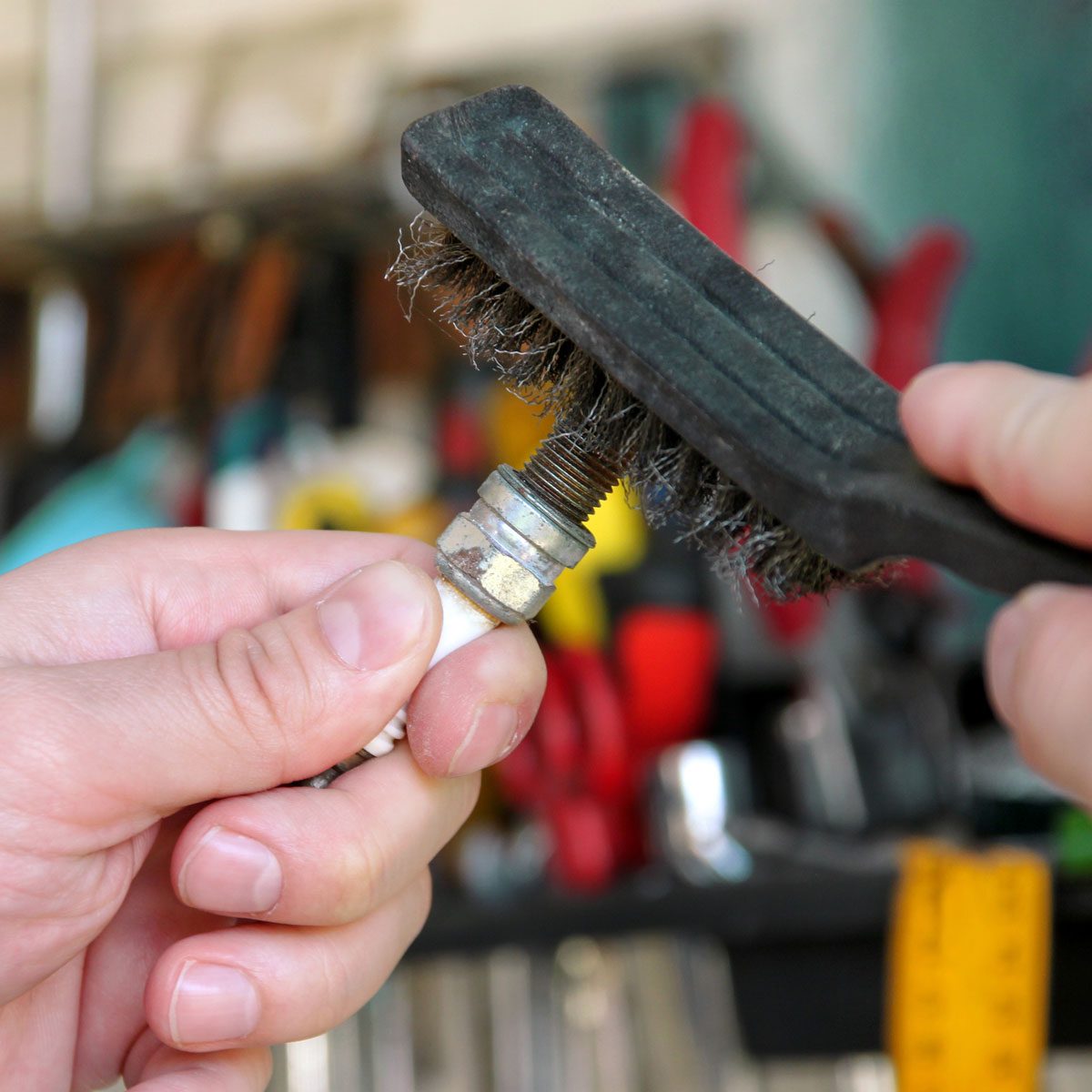Got a two-stroke engine running rough or not at all? Oil could be the problem. If you're wondering why there's oil on your spark plugs, keep reading.

Why Is There Oil On My Spark Plugs?

Modern engines depend on spark plugs to start and run. Since they were invented in the late 1800s, by Belgian engineer Jean J. Lenoir, they’ve gone through many design refinements to the point that today, they are small, cheap and, for the most part, extremely reliable.
That said, all the design refinements made to spark plugs over the years haven’t made them foolproof. A number of issues can cause them to fail, and one of the most common in two-stroke engines is when oil gets on the spark plug.
“Spark plugs can develop problems over time,” says Kevin Oliff, general manager at AutoNation BMW Buena Park. “Common ones include fouling, wear and oil contamination, which can lead to misfires and reduced performance.”
If you notice oil on your two-stroke spark plugs, here’s what could be causing it, plus what to do about it.
On This Page
What Is a Spark Plug?
Spark plugs are small electrical devices that convert thousands of volts of electricity into sparks meant to ignite the mixture of fuel and air inside all gasoline-burning combustion engines. This ignition leads to a controlled miniature explosion, and the energy from this is harnessed to run the engine.
Threading into the cylinder heads of engines, pressured gas and air pushed by the piston is ignited by their spark, slamming the piston back in a fraction of a second. Exhaust pushes the piston back as more fuel and air is drawn into the cylinder, and the cycle repeats. Vehicle spark plugs rarely form any debris that prevents them from working, but spark plugs for small two-stroke engines are a different matter.
Why Is There Oil on My Spark Plug?
First of all, it’s not normal. You’ll never see oil on vehicle spark plugs or spark plugs in four-stroke engines, like those in lawn mowers and snow blowers. Oil only collects on spark plugs in two-stroke engines, like those in chain saws and leaf blowers. That’s due to how oil lubricates different types of engines.
In vehicles and four-stroke engines, oil is added to a reservoir, separate from fuel. Machines with a two-stroke engine use a mixture of gasoline and oil, combining fuel and lubricant into a single liquid. Typically, this mixture is 50 parts gasoline to one part oil. Normally functioning two-stroke engines won’t deposit oil on spark plugs, but with the oil and gas mixed together, it can happen under several circumstances.
You may find oil on a spark plug because:
- Too much oil was mixed with the gasoline.
- The piston rings (the component that seals piston and cylinder) are failing. If these rings are broken or failing in some way, they can let oil slip past the piston and get on the spark plug. If this is happening, the machine’s pull cord will be easier than normal to yank, but the engine won’t start very easily.
- The engine is worn out. If valve stems or valve seals are worn, oil can slip past them into the cylinder and coat the spark plug.
- The oil in the mixture is too thin in viscosity. If overly thin oil is used, it can slip past the piston and reach the spark plug.
One surefire sign your spark plug is coated in oil? Blue smoke in the engine’s exhaust, which is caused by burning oil.
What Are the Negative Effects of Oil on a Spark Plug?
If your spark plug is coated in oil, your engine will malfunction in one of three ways:
- Complete failure to start;
- Difficulty starting;
- Rough running.
What Should I Do With Oil on a Spark Plug?
If you pull out your spark plug and notice oil on it, begin by investigate the cause. Cleaning your plug won’t stop more oil from collecting on it if you’ve got failing piston rings or worn valve stems.
Once you’ve figured out why it’s happening and fixed the problem, it’s time to clean your spark plug. Disconnect the spark plug wire, unthread and remove your plug. Then carefully wash the whole thing, paying particular attention to the tip that emits the sparks. You can use water and dish soap, or a little carefully applied rubbing alcohol, to cut the oil.
FAQ
How often should I replace spark plugs?
For spark plugs in a two-stroke engine, it depends on what vehicle or tool they’re in. Check your owners manual for recommendations. In general, lawn mower spark plugs should be changed every 25 hours or once a season. For chainsaws, it’s more like 100 to 200 hours, or once a season. And for outboard boat motors, usually they should be checked after every 100 hours of use, but can last up to around 300 hours, or for one season.
The quality of the spark plugs also matters. “Copper plugs usually wear out the fastest, while platinum and iridium plugs hold up longer,” says Duane “Doc” Watson, a technical trainer at Bosch Mobility Aftermarket. “But it also depends on their quality. For example, our copper plugs feature a durable nickel-alloy center electrode.”
What are the signs of a failing spark plug?
Signs of failing spark plugs include rough idling, engine misfiring, difficulty starting and overall decrease in engine performance.
About the Experts
- Duane “Doc” Watson is a technical trainer at Bosch Mobility Aftermarket. He has more than 45 years of experience in automotive repair, has trained thousands of technicians and earned many industry awards, including Chevrolet Technician of the Year and Buick Service Master of the Year.
- Kevin Oliff is the general manager at AutoNation BMW Buena Park in California and has more than 20 years of experience in the automotive field.


















